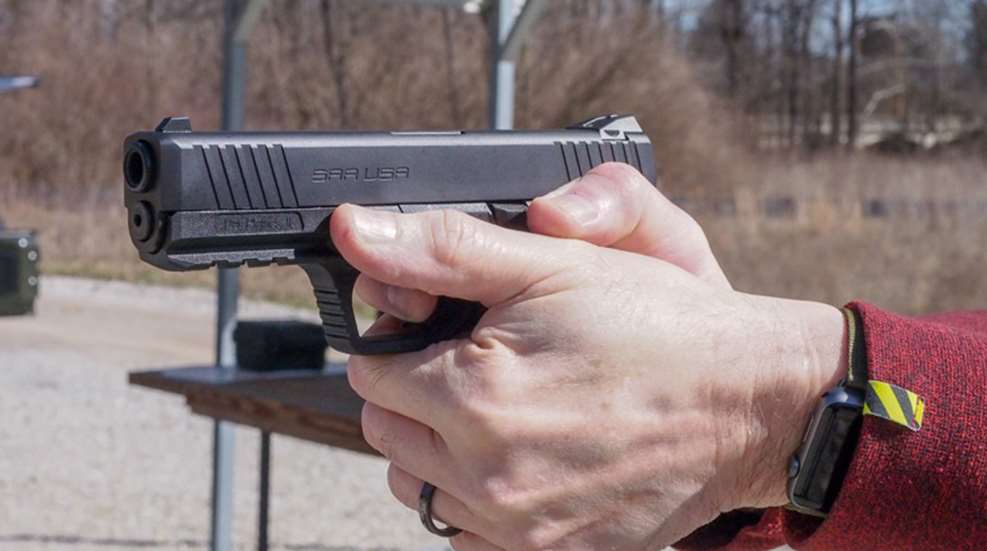
About a year ago, in this article, I wrote about a proper, firm grip on the handgun and its importance in reliable functioning of a semiautomatic pistol. This triggered some discussion recently about what a proper grip looks like, as well as what it looks like when you’re holding it wrong.

This first wrong grip, where the shooter uses their support hand to grasp the wrist of their firing hand, is less popular than it was in the heyday of Joe Friday and Dirty Harry. You’ll still see it on the rental gun range, and it has recently reared its head in the cyberpunk series Altered Carbon, infecting a whole new generation of viewers with bad pistol-grasping habits.
At first I despaired of understanding the historical origins of this particular grasping technique. It doesn’t even look comfortable, so how it ever survived after the first person saw a photograph of themselves doing it was a mystery. Further, some people have been putting both paws on the pistol to improve accuracy for almost as long as there have been pistols on which to put both paws, so how did this originate?
I’m still researching, but my best guess is that there was some particular sport or qualification course that mandated only one hand on the gun but had rules that were silent on what you did with your other hand. If you’re somehow prevented from stabilizing the gun by putting both hands on it, I suppose this could be the next best thing? Since I’m not likely to be disqualified for a proper two-hand grip, I’ll keep doing it the right way, though.

This second photo illustrates two common glaring errors in one package. The first is the low grip mistake, often made by novice or infrequent pistol shooters. Between the rapid cycling of the slide, flying brass and muzzle blast, there’s a lot going on with the top half of a pistol during the firing cycle. It’s understandable that people want to keep their hands away from all that while the gun is in operation.
The thing is, unless the pistol is gas operated, it’s going to need at least some degree of resistance against which the energy of the cartridge can work to cycle the slide. The lower the hand is positioned on the grip, the more leverage the gun has against the shooter’s hand and the more free it is to move around in their grasp.
With enough movement in the shooter’s grasp, the slide might not travel far enough rearward for the ejector to kick the spent cartridge case cleanly out of the ejection port, causing a failure to eject (“FTE” or “stovepipe”) malfunction.
The other mistake here is with the shooter’s support hand, which is in what is known as the “teacup” or “cup and saucer” position. While it’s being somewhat more useful here than it would be if it were grasping the wrist, it’s not a lot more useful.
The problem with cupping the support hand under the pistol like this is that, while it can help stabilize the gun for acquiring a better sight picture, it doesn’t really help control the gun at all. The grip doesn’t help “steer” the gun laterally at all. As for recoil control? Forget about it!
With the “teacup” grip, the hands often completely separate under any recoil harsher than that of a full-size 9mm service pistol. The firing hand finds itself rising with the recoil of the pistol and leaving the support hand hanging in space. This requires the grip be reassembled between shots, which slows things down and hurts accuracy.
Having looked at the wrong grips, let’s look at a right one.

First, notice that there’s no daylight visible between the top of the firing hand and the tang (that’s the rearward-projecting bit) of the pistol’s frame. This shows that the grip is physically as high on the gun as it can go, aiding in recoil control and assuring proper functioning of the gun.
The support hand is also gripping the gun, with the heel of the hand contacting the pistol’s grip in the gap left by the shooting hand. In this way, the support hand is providing positive recoil control as well as helping to steer the pistol.
So unless you’re posing for “How not to hold your handgun” pics, be like picture number three!






































